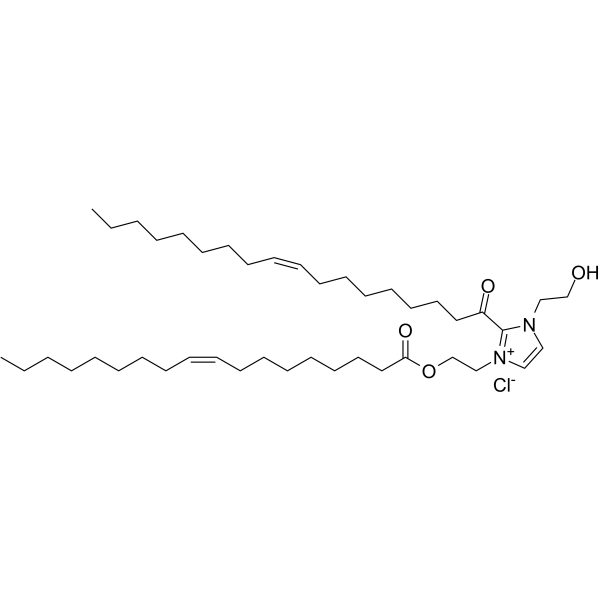| Cas No.: | 1292821-06-7 |
| Chemical Name: | DOIC |
| SMILES: | CCCCCCCC/C=C\CCCCCCCC(C1=[N+](C=CN1CCO)CCOC(CCCCCCC/C=C\CCCCCCCC)=O)=O.[Cl-] |
| Formula: | C43H77ClN2O4 |
| M.Wt: | 721.54 |
| Purity: | >95% |
| Sotrage: | 2 years -20°C Powder, 2 weeks 4°C in DMSO, 6 months -80°C in DMSO |
| Publication: | [1]. WESSELHOEFT A, et, al. Circular rna compositions and methods. WO2021236855A1. |
| Description: | DOIC is a cationic lipid that can be used for RNA vaccines. |
| References: | [1]. WESSELHOEFT A, et, al. Circular rna compositions and methods. WO2021236855A1. |

 DC Chemicals' products qualify for U.S. tariff exemptions. We guarantee no price increases due to customs duties and maintain stable supply, continuing to deliver reliable research solutions to our American clients.
DC Chemicals' products qualify for U.S. tariff exemptions. We guarantee no price increases due to customs duties and maintain stable supply, continuing to deliver reliable research solutions to our American clients.





















